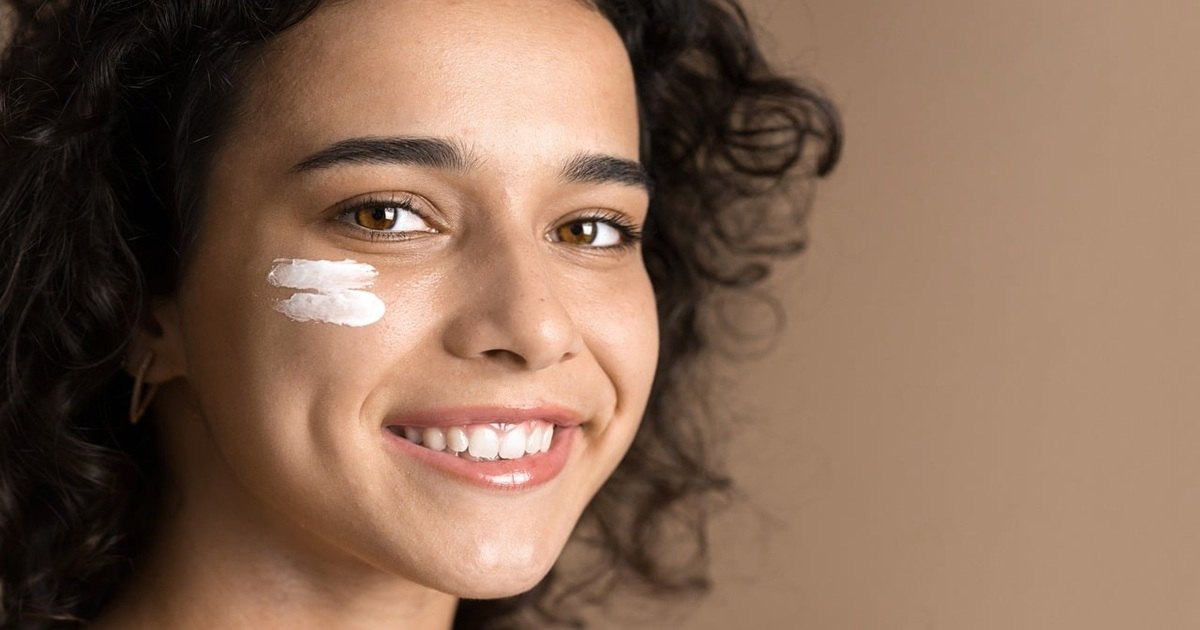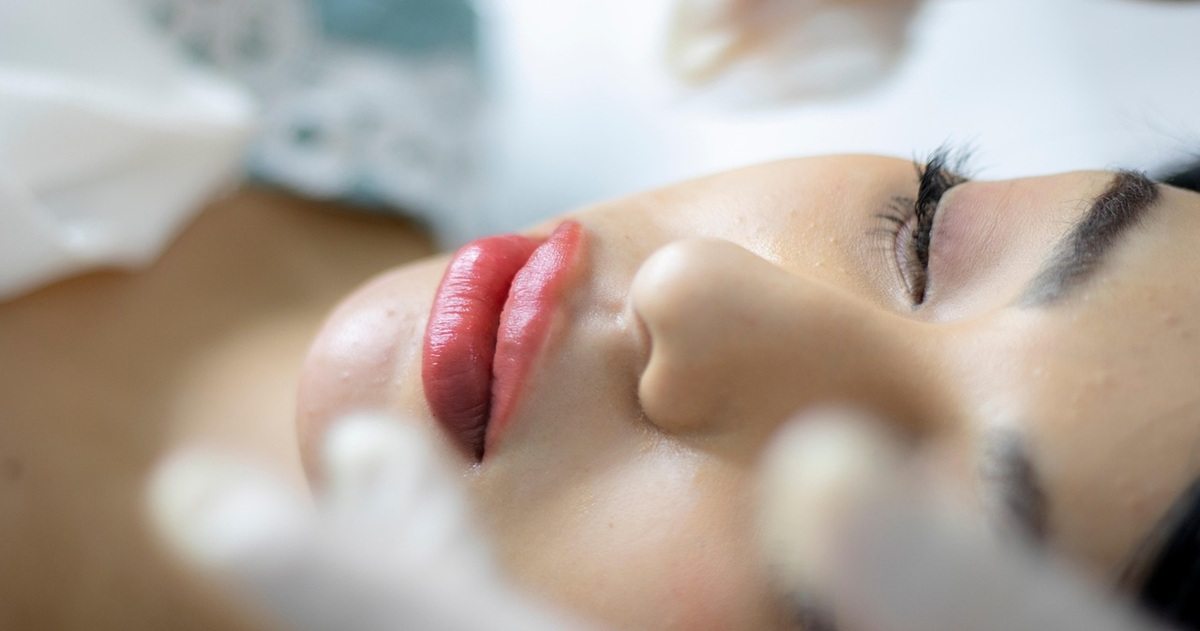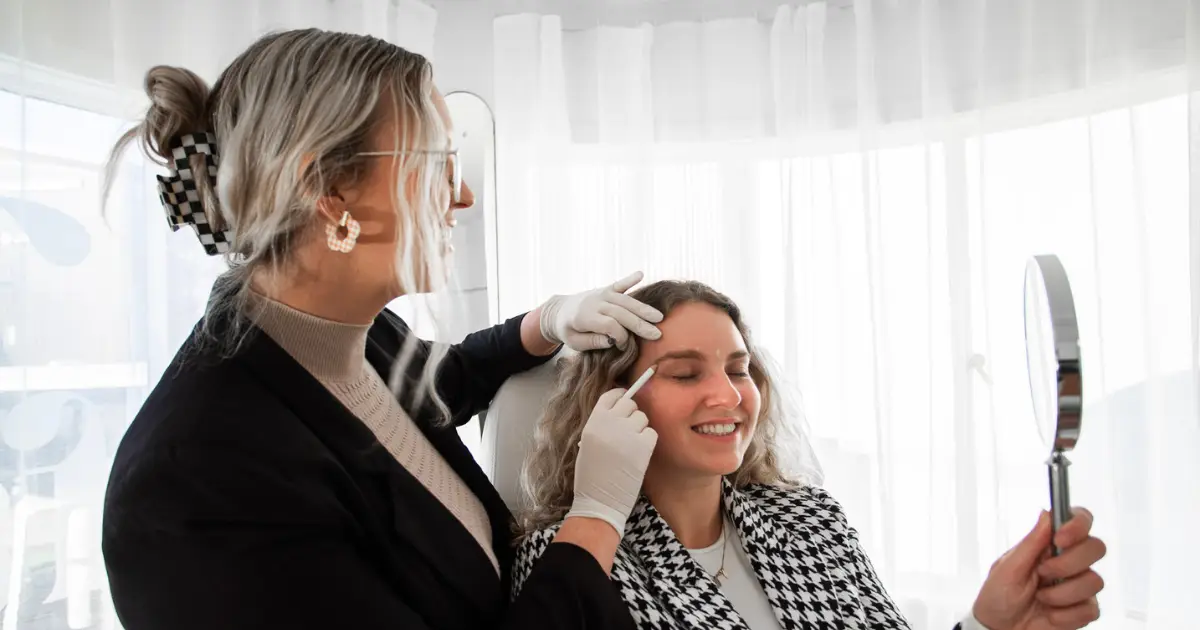Understanding Aesthetic Skincare Terminology

Navigating the world of aesthetic medicine can sometimes feel like learning a new language, with so many terms, products, and procedures on offer, it can be easy to get lost in the lingo. At The Face, we believe in empowering you with the right knowledge so you can make informed decisions about your personal aesthetic journey.
To help you feel more confident and understand the conversations around modern cosmetic treatments, we’ve put together this simple, easy-to-understand glossary of common terms you’ll encounter in clinical aesthetics.
Essential Aesthetic Skincare Terms And Phrases
Aesthetics Clinic: Sometimes called an "appearance medicine clinic”, this is a specialised appearance medicine facility where qualified professionals provide (non-surgical) cosmetic treatments aimed at enhancing your appearance.
Anti-Wrinkle Injectables: Often referred to by brand names like Botox (one of the most well-known brands for neuromodulators), these are purified proteins that, when injected in tiny amounts, temporarily relax specific facial muscles. This softens and reduces the appearance of dynamic wrinkles (those caused by facial expressions) such as frown lines, crow's feet, and forehead lines.
Appearance Medicine: A broad term that encompasses medical treatments focused on improving or maintaining your physical appearance. Generally, this involves non-surgical procedures to rejuvenate the skin, reduce wrinkles, and enhance facial features.
Biostimulators: (eg. Profhilo Structura) Biostimulators are injectable substances that work by stimulating your body's own natural collagen production over time, rather than just adding immediate volume. They provide deep skin rehydration, helping the skin appear more plump and fresh, leading to more gradual, natural-looking improvements in skin firmness and texture.
Botox: This is a highly popular brand name for an anti-wrinkle injectable. It's widely used to reduce the appearance of wrinkles by temporarily relaxing facial muscles.
Cannula: A blunt-tipped, flexible tube used by skilled injectors to deliver injectables. Unlike sharp needles, a cannula can significantly reduce the risk of bruising and swelling, potentially making the treatment more comfortable and safer in certain areas.
Chemical Peel: A procedure involving the application of a chemical solution to the skin to exfoliate the top layers. This process encourages cell turnover, revealing smoother, brighter skin and improving concerns like pigmentation, fine lines, and acne.
Collagen: The most abundant protein in your body and a crucial building block for healthy skin, bones, muscles, and ligaments, collagen provides structure, firmness, and elasticity in the skin, keeping it looking plump (and youthful).
Consultation: The essential first step in any aesthetic journey at your chosen aesthetics clinic. During a consultation, a qualified professional will discuss your concerns, assess your skin and facial anatomy, explain suitable treatment options, and develop a personalised treatment plan tailored to your goals.
Crow's Feet: The fine lines and wrinkles that develop at the outer corners of the eyes, often becoming more prominent when smiling or squinting. These are typically treated with anti-wrinkle injectables.
Dermal Fillers: These are gel-like substances (most commonly made from hyaluronic acid) that are injected beneath the skin to restore lost volume, smooth lines and wrinkles, enhance facial contours, and improve skin hydration. They are most commonly used in areas like the lips, cheeks, temples, and jawline.
Downtime: The period of recovery or healing time required after an aesthetic treatment during which you might experience visible side effects (like redness, swelling, or bruising). The amount of downtime varies significantly between different procedures.
Elastin: Another vital protein found in the skin, elastin is responsible for its elasticity – its ability to stretch and then snap back into place. Together with collagen, it helps to ensure your skin remains firm and supple.
Facial Contouring: The use of aesthetic treatments, to subtly reshape and enhance the natural curves and proportions of the face, such as the cheeks, jawline, or chin, to create more balance and harmony.
Frown Lines/Glabellar Lines: The vertical lines that appear between the eyebrows, caused by repeated frowning or squinting. These are also effectively treated with anti-wrinkle injectables.
Hyaluronic Acid (HA): A naturally occurring substance in our skin, hyaluronic acid acts like a sponge, attracting and holding vast amounts of moisture. It's a key ingredient in many skincare products and is the primary component of most modern dermal fillers, providing added hydration, volume, and plumpness.
Injectables: This is an umbrella term referring to any substance that is injected into the skin for cosmetic purposes. This includes anti-wrinkle injectables (neuromodulators) and dermal fillers.
Marionette Lines: The lines or folds that extend downwards from the corners of the mouth, contributing to a "sad" or downturned appearance.
Medical-Grade Skincare: Skincare products containing higher concentrations of active ingredients (like retinoids, antioxidants, and growth factors) that are typically only available through a medical professional or clinic. These products are formulated to be more potent and effective than over-the-counter options, working synergistically with in-clinic treatments.
Microneedling/Collagen Induction Therapy: A treatment that uses tiny, fine needles to create controlled micro-injuries in the skin. This stimulates the body's natural wound healing process, leading to increased collagen and elastin production, which improves skin texture, reduces scars, and minimises fine lines.
Nasolabial Folds/Smile Lines: These are the lines or creases that run from the sides of the nose down to the corners of the mouth. These are commonly softened with dermal fillers.
Neuromodulator: This is the scientific term for the class of substances that anti-wrinkle injectables belong to. They work by temporarily modulating (or relaxing) nerve signals to specific muscles, reducing their movement and consequently softening wrinkles.
Prejuvenation: This is a term that refers to a proactive approach that focuses on starting aesthetic treatments earlier in life to prevent or delay the signs of aging before they become more prominent.
Skin Boosters: Injectable treatments used to deeply hydrate the skin, improve elasticity, and enhance overall skin quality, rather than adding volume (working to rejuvenate the skin from within). Skin Boosters are often HA-based, but are considered different from fillers in their purpose – focus on hydration and skin quality rather than volume.
Diving Deeper - Understanding Dermal Fillers
Because dermal fillers are such a cornerstone of modern aesthetic medicine, let's explore them in a bit more detail. Dermal Fillers are gel-like substances, most commonly composed of Hyaluronic Acid (HA) – a substance naturally found in your body that attracts and holds water. When strategically injected beneath the skin, dermal fillers can help:
- Restore Lost Volume: As we age, natural fat deposits in the face diminish, sometimes leading to a hollowed or sunken appearance. Fillers can replenish this lost volume in areas like the cheeks, temples, and under-eyes, restoring a more youthful contour.
- Smooth Lines And Wrinkles: Dermal fillers can plump up and reduce the appearance of static lines (those visible at rest), such as nasolabial folds (lines from nose to mouth) and marionette lines (lines from corners of the mouth down to chin).
- Enhance Facial Contours: Fillers can subtly reshape features, define the jawline, enhance chin projection, or refine the nose for improved facial harmony.
- Plump And Define Lips: Fillers are widely used to add volume, shape, and definition to the lips, creating a fuller yet natural pout more consistent with a youthful appearance.
- Improve Skin Hydration And Quality: Beyond just adding volume, fillers can also help draw moisture to the treated areas, improving skin texture and hydration from within
At The Face, we prioritise a natural and balanced result, using dermal fillers to enhance your inherent beauty rather than dramatically alter it. The specific type and amount of filler used will always be tailored to your unique facial anatomy and aesthetic goals.
We hope this glossary helps demystify some of the terms you'll hear and read about in the world of aesthetic medicine. Understanding these basics is the first step towards feeling confident and in control of your skincare journey! Have more questions? We're always here to help! Feel free to reach out to Georgia at The Face for a personalised consultation where we can discuss your unique needs and goals.











